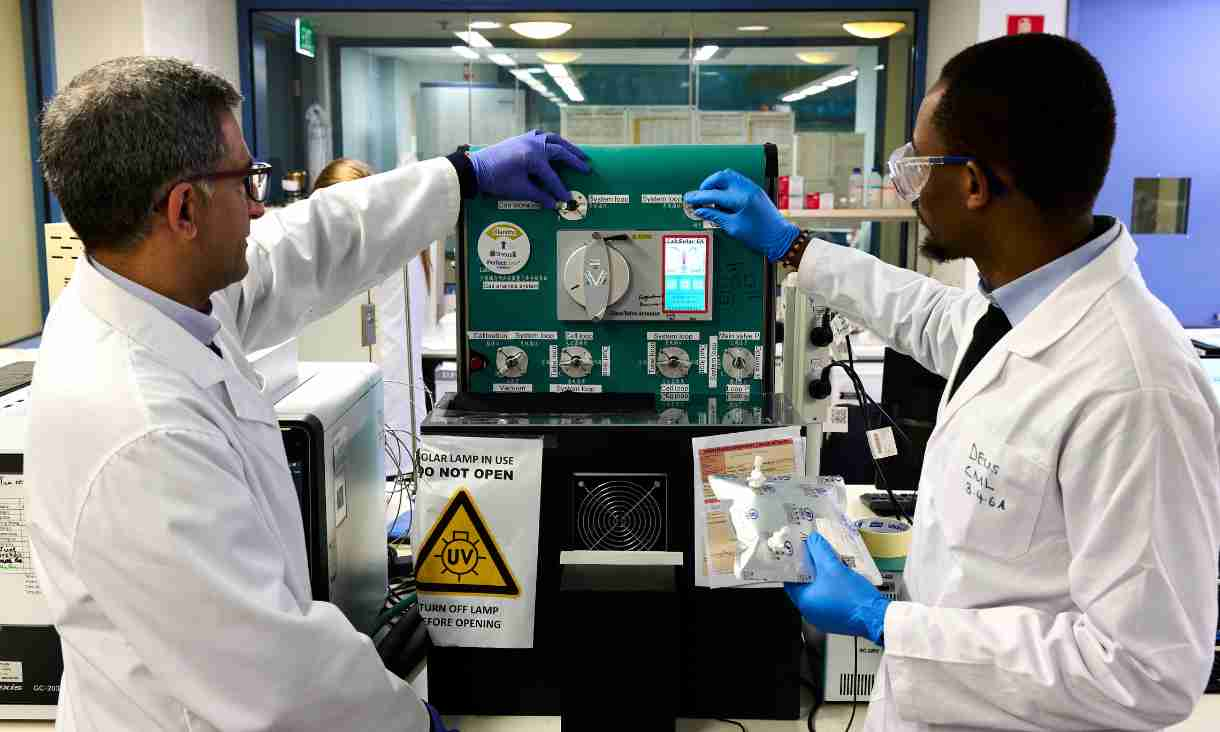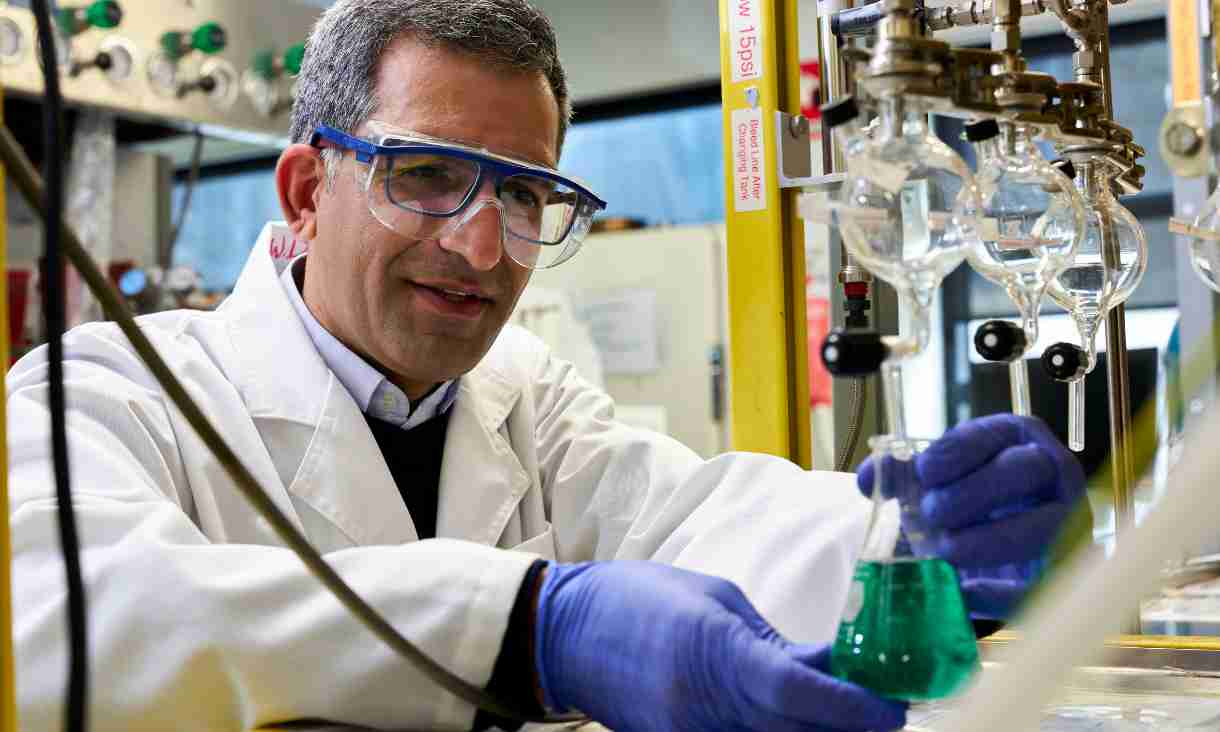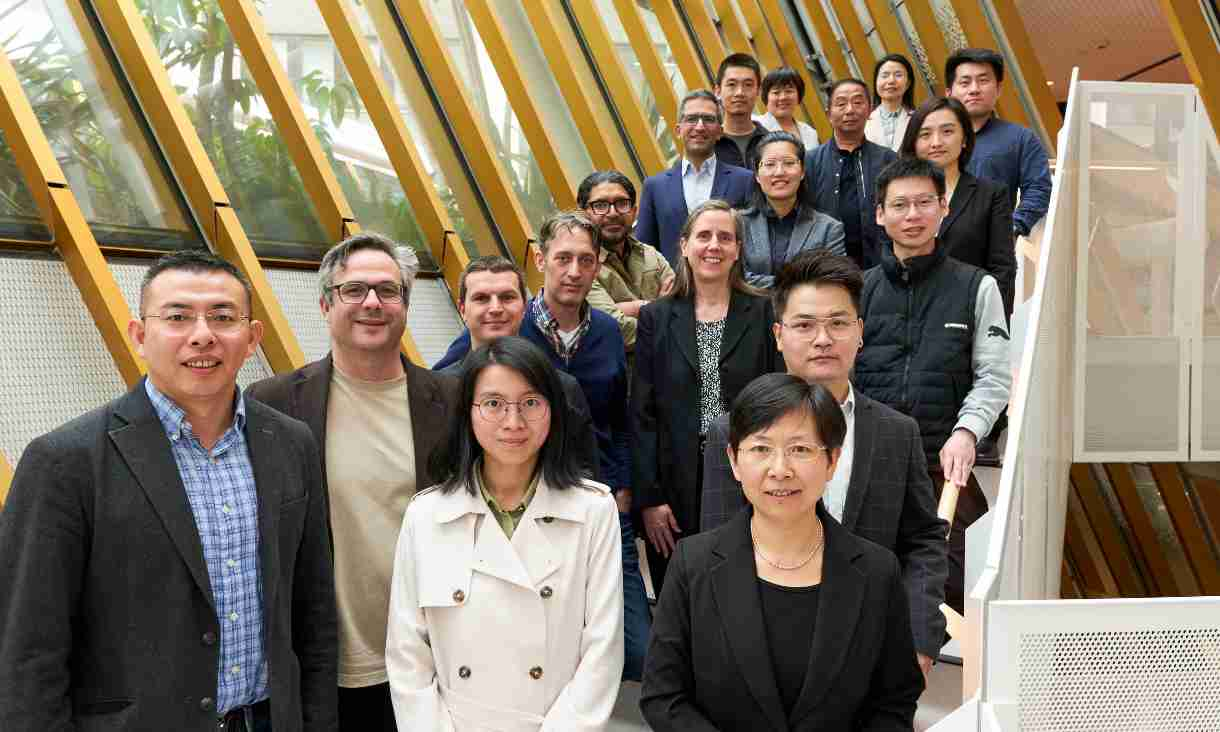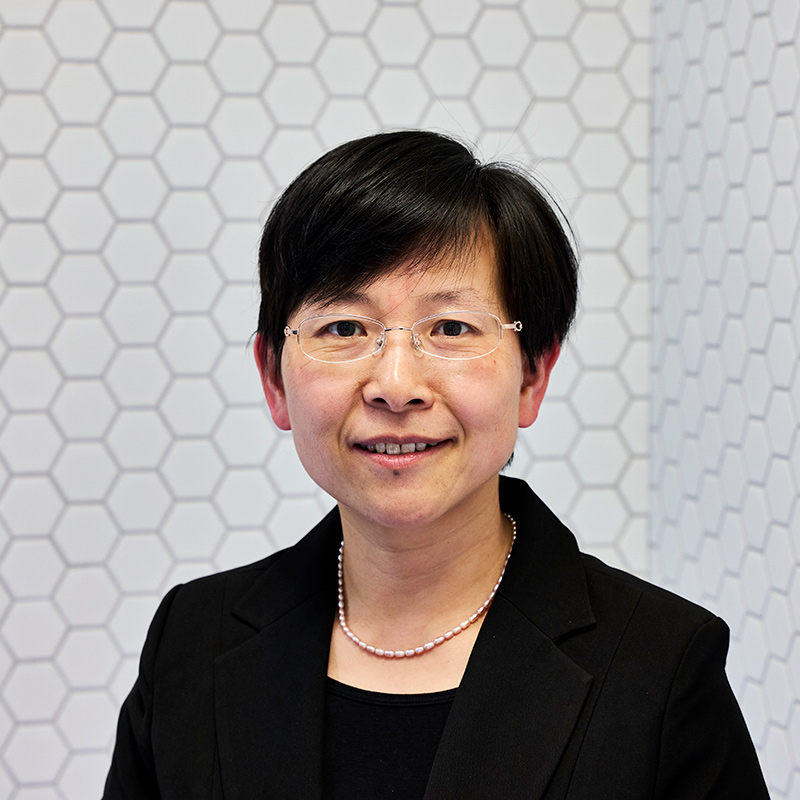Centre for Atomaterials and Nanomanufacturing

The Centre for Atomaterials and Nanomanufacturing (CAN) leads international atomaterial research and translation in the clean energy revolution, as well as tackling the key atomaterial challenges to deliver real life impacts.
CAN was established to enable the conception, design, theoretical modelling, synthesis and characterisation of the next-generation atomic-scale materials (atomaterials), and development of transformative technologies of such novel materials.
The Centre is a world leader in innovative and emergent materials science, with strong ties to fundamental science and industrial applications. It revolutionises the current fields of materials design, nanofabrication, and atomic characterisation by restructuring the most fundamental material building blocks at the atomic level.
These outcomes will lay a solid foundation for the next generation of functional materials and miniaturised devices, outperforming macroscale materials/devices on detection accuracy, energy efficiency and production efficacy.

This theme focuses on AI assisted smart design of novel materials and properties, which might not be found in naturally existing materials, to achieve exceptional functionalities and performance to solve critical global challenges.
Engineering of atomic materials with exceptional properties - for example super-strong; or super-light-weight; or super-conductive; or super-efficient; or super flexible - for different applications based on the designs from the Intelligent Atomic Design theme.
The design, synthesis and application of atomic materials require an ability to characterise the materials at the atomic scale. Our strategy is to both extend our current techniques and to establish new complementary capabilities through multidisciplinary collaboration for in-situ characterisation at exceptional time and spatial scales.
This research theme will address this need and develop multi-disciplinary and multi-physics design tools for creating novel structures. The on-demand properties of materials may include extreme mechanical properties or exotic properties of phononic and photonic materials.
This theme aims to develop a unique concept based on tailored laser beams to decode the fundamental link between the properties of atomic materials (including 2D materials), and their atomic bonds, leading to selective removal, rearrangement and production of desired bonds. This creates the realisation of full fundamental manipulation of the atomic scale building blocks of materials.
Research translation is one of the unique features of CAN. The key goal of this theme is to conduct end-user driven research. By working with industry partners through the Open Lab and other engagement activities, CAN is expected to produce significant commercialisable outcomes, meeting the demands from the end-users and delivering impact to society.

The CAN facility is a unique collection specific for materials research in Australia and worldwide, which is rarely available elsewhere.
The open lab will be accessed by our academic collaborators and industry partners, who will not necessarily work in the research schemes of CAN.
CAN hosts the state-of-the-art fabrication, imaging and characterisation facilities. The capabilities include:
CAN will provide project direction in 4 areas:
Hydrogen, Supercapacitors, Battery
Hub, CRC
Linkage
CASS Foundation
Academic collaborators include as chemists, biologists, computer scientists or mechanical engineers, who solve problems and benefit from the world-leading facilities and expertise from CAN, helping establish interdisciplinary collaborations in academic research.
The open lab is a platform accumulating ideas, researchers, resources and solutions. It allows the CAN researchers to work closely with the international peers and industry on the forefront of the atomaterial field and produce real impact to the society.


Contact: baohua.jia@rmit.edu.au
Distinguished Professor Baohua Jia is a research leader in Nanophotonics Solar Technology. Her expertise is on the control of the building blocks of materials on the atomic scale using light to develop high performance nano- and optoelectronics devices, including solar cells, water and air cleaners, fast-speed all-optical communications and intelligent manufacture.

Contact: rachel.caurso@rmit.edu.au
Distinguished Professor Rachel Caruso is a Professor in Physical Chemistry at RMIT University and leader of the Advanced Porous Materials Laboratory. She has led a research team focused on nanomaterials synthesis and characterisation, with control over the material composition and structure to gain improved efficiency when applied in energy and environmental areas.
Acknowledgement of Country
RMIT University acknowledges the people of the Woi wurrung and Boon wurrung language groups of the eastern Kulin Nation on whose unceded lands we conduct the business of the University. RMIT University respectfully acknowledges their Ancestors and Elders, past and present. RMIT also acknowledges the Traditional Custodians and their Ancestors of the lands and waters across Australia where we conduct our business - Artwork 'Sentient' by Hollie Johnson, Gunaikurnai and Monero Ngarigo.